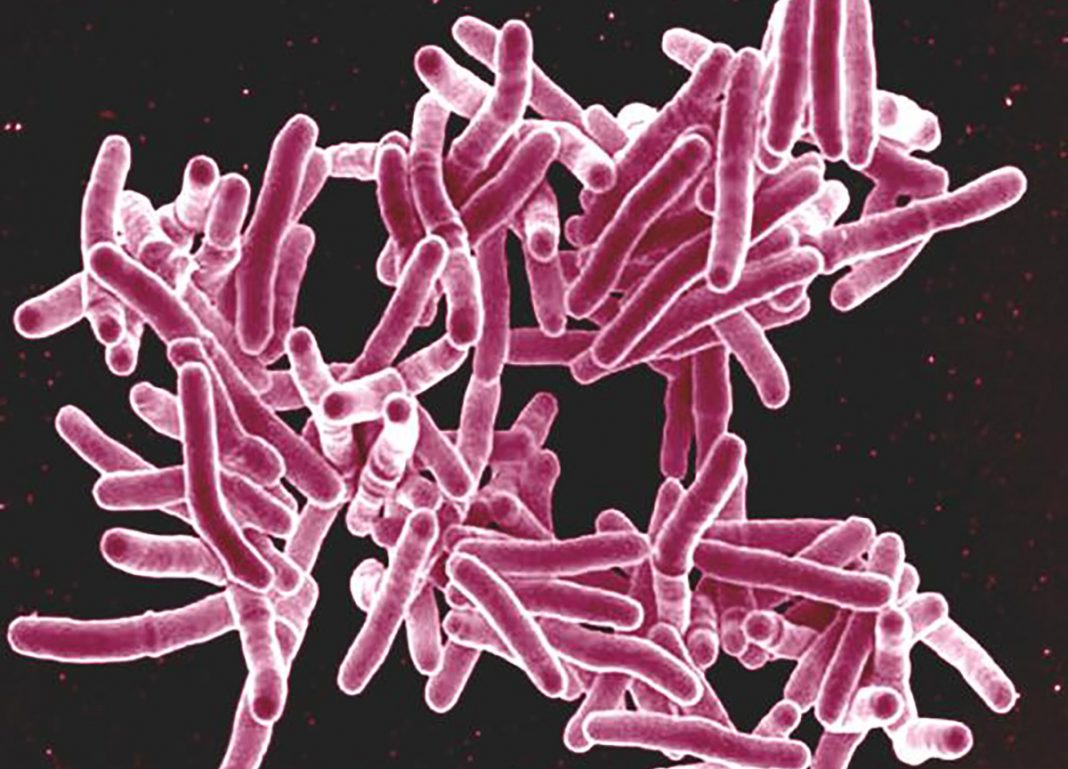Tuberculosis (TB), caused by the bacterium Mycobacterium tuberculosis (Mtb), results in 1.5 million deaths every year, but as many as two billion people may be infected with Mtb and yet remain otherwise healthy and asymptomatic. A new study in mice and non-human primates (NHP) by scientists at the University of Chicago (UChicago), and Washington University in St. Louis, has now shown how B cells in the lung granulomas that are characteristic of TB direct a population of T cells to help control the infection.
The team, headed by Shabaana Khader, PhD, the Bernard and Betty Roizman professor and chair of microbiology at UChicago, hope that the findings could help in the future development of a vaccine against TB that triggers the right kind of immune response to stop the infection taking hold. The investigators reported their findings in Nature Immunology, in a paper titled, “Antigen-specific B cells direct T follicular-like helper cells into lymphoid follicles to mediate Mycobacterium tuberculosis control.” The findings could help in the future development of a vaccine against TB that triggers the right kind of immune response to stop the infection from taking hold.
TB exists as a spectrum of disease, with variable clinical outcomes, the authors noted. Scientists studying TB are interested in understanding how some individuals can tolerate and contain the infection, with a view to developing better treatments and vaccines.
A key feature of tuberculosis infection in humans is the formation of granulomas, or clusters of immune cells in the lungs that contain the infection. However, while myeloid and neutrophilic granulomas are associated with progression to active pulmonary tuberculosis (ATB), the researchers noted, “more organized granulomas associated with lymphoid follicles (GrALT) within tertiary lymphoid organs (TLOs) are associated with Mtb control and latent tuberculosis infection (LTBI) .” And while granuloma-associated lymphoid tissue correlates with protection during TB, the team continued, “… the mechanisms of protection are not understood.”
These granulomas contain B cells, all-purpose immune cells that perform a variety of functions, from producing antibodies to regulating the activity of other cells. For years, researchers assumed that these B cells must be performing a specific direct function in the granulomas to control TB infection. However, through their newly reported study, the researchers found that these B cells are instead directing reinforcements to help contain the infection.
The team first eliminated different expected B cell functions one by one in animal models of TB, to narrow down the list of possible components that might be involved in preventing progression of disease. However, nothing seemed to make a difference, whether the team removed plasma cells that produce antibodies, or knocked out other B cell functions that produce immune signaling molecules.
“No matter what we knocked out individually in B cells, it didn’t make a difference,” Khader said. “All the predicted functions that people think B cells are doing were not what they were doing in the lung for protection against TB. But they needed to be there because when we knocked TB-specific B cells out completely, you start seeing that the mice get sick. So, we knew that it wasn’t any of these usual suspects.” In addition to the results in mice, the team saw the same results when they completely deleted B cells in non-human primate models.
B cells aren’t the only immune cells present in granuloma tissue. T cells, another important white blood cell of the immune system, also play a part, and specifically CD4+, or helper T cells, that can initiate immune responses. Both B and T cells interact to control tuberculosis progression, but just how much either contributed and interacted hadn’t been completely clear.
As Khader and her team narrowed down the potential functions of the B cells, they found that the helper T cells express transcription factors that in turn generate T-cell subtypes, including T follicular helper (TFH)-like cells that localize within the granuloma tissue. And they discovered that it is these TFH-like cells that activate macrophages to keep the TB infection in check by surrounding and killing infected cells, but that it is the B cells that tell them where to go and localize within the granulomas. In effect, rather than directly controlling TB themselves, the B cells are pointing the TFH-like cells in the right direction to do the job. “Mtb-specific B cells are required for accumulation of cytokine-producing TFH-like cells, GrALT formation, and local Mtb control,” the scientists stated. “…. our results reveal a critical protective function for TFH-like cells localized within GrALT, and support the contribution of B cells in the strategic localization of TFH-like cytokine-producing cells within the GrALT for Mtb control.”
“An effective way to activate macrophages is to get Tfh-like cells to come there and activate them, and that’s what the B cell is doing,” Khader said. “These results together answer long-standing questions regarding the contribution of TFH-like cells and B cells in the formation of a protective GrALT for local immunity to control Mtb infection and provide new targets and immune pathways for improving the design of TB vaccines,” the investigators noted.
The only vaccine for tuberculosis was first produced in 1921, and while it is effective in preventing some forms of childhood TB, the level of protection in adults is variable. Understanding how some people are able to control TB infection naturally could help develop better vaccines in the future. The authors said that their results highlight “ … the importance of targeting the B cell–TFH-like cell axis in vaccine strategies against Mtb.”
“If you can initiate the protective immune response much earlier, the bacteria will never get a chance to establish infection in the lung,” Khader said. “We could make a vaccine that generates the right kind of immune response so that when you get exposed to the bacteria, you won’t even carry the latent infection. So, our resolution for vaccine design is much cleaner now since we know what cell types to target in the lung.”


